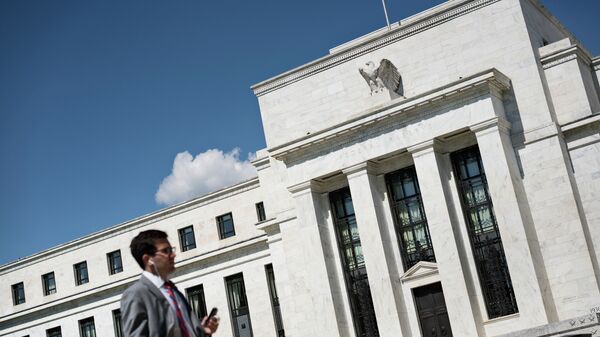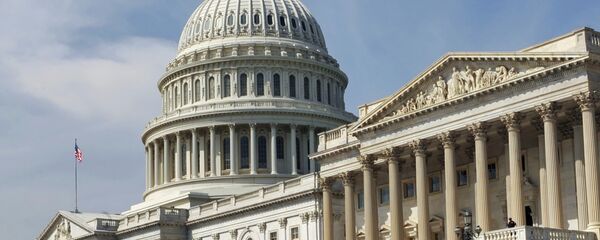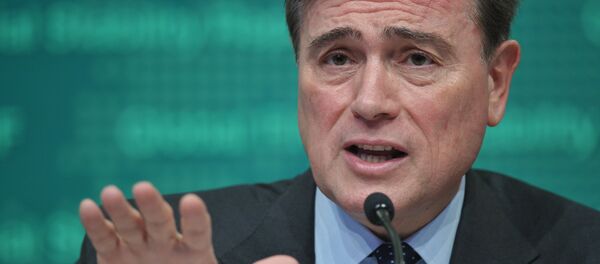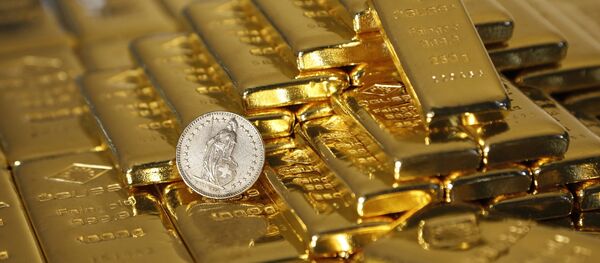Kristian Rouz — Within a few hours, the US Federal Reserve will announce the results of their October policy meeting, with most market participants expecting the US borrowing costs to be left unchanged at their current ultra-low 0-0.25% level.
While low interest rates are seen as supporting economic growth nationwide, most monetary assets concentrate on Wall Street, including the excessive investment capital inflowing from overseas.
In turn, America’s largest financials, whose overseas were recently hit by the dollar’s strength, are attempting to make up for their losses capitalizing on the yet ultra-accommodative Fed policy. As the situation persists, it is getting increasingly harder for the Fed to liftoff rates.
By late October the Fed’s effective interest rate determining the borrowing costs in overnight interbank transactions has dropped to its lowest possible at about 0.05% to null. The current ceiling is 0.25%, and while the Fed is preparing the first hike in rates since 2006, their plans meet stiff opposition by the market’s rife demand for cheaper dollar liquidity.
The US Fed is losing control over the US banking sector as the inflow of dollars from overseas is undermining the US central bank’s role as a major provider of dollar liquidity to the market.
The US financials were recently accumulating cash reserves before the end of the financial reporting season, resulting in falling demand for fed-fund loans: the rate fell to 0.07% in late September and to 0.08% in late August, while this year’s average stands at about 0.13%. Last month, a single fed-fund loan transaction was reported at the rate of 0.02%.
What if the Fed hiked interest rates today?
The main challenge is the possible loss of control over the money market. A central bank is traditionally seen as the largest source of monetary liquidity provided to banks by default. However, amidst the robust influx of dollars from abroad, the role of the US Fed would be diminished in this regard.
Now, if the central bank rates’ policy does not affect the money market significantly enough, it eventually loses its ability to regulate the broader economy, and the situation starts to unravel in an unpredictable direction.
The second implication is that, should the US Fed hike rates today, such a move would not affect the major banks straight away – the US financials have accumulated significant reserves (about $2.5 trln) allowing them to abstain from massive borrowing from the Fed for at least two or three months.
However, the major banks would immediately hike their interest rates for their own borrowers, thus increasing their lending profitability while also saving a lot of cash.
Short-term interest rate on US debt securities are also under pressure: most banks are hedging their risks by buying into safe-haven assets. In October, the US government issued tree-month bonds at a zero yield amidst the rife demand, first time since 1998.
As both domestic and international demand from safe havens is projected to remain strong, US bond yields might even move into the negative territory, in a similar fashion to select European debt.
At this point, the Fed policy efficiency regulating money reserves available in the markets is decreasing, and it will take some time adjusting the fed-funds’ rate methodology before an actual rise in borrowing costs.
The excessive liquidity may be removed from the market via the indirect government investment scheme, where the federal government increases spending to spur the economy while issuing bonds at an attractive yield, tricking the banks into investing their cash reserves. The Fed then may move rates with more confidence, amidst the tighter control over the money markets.





